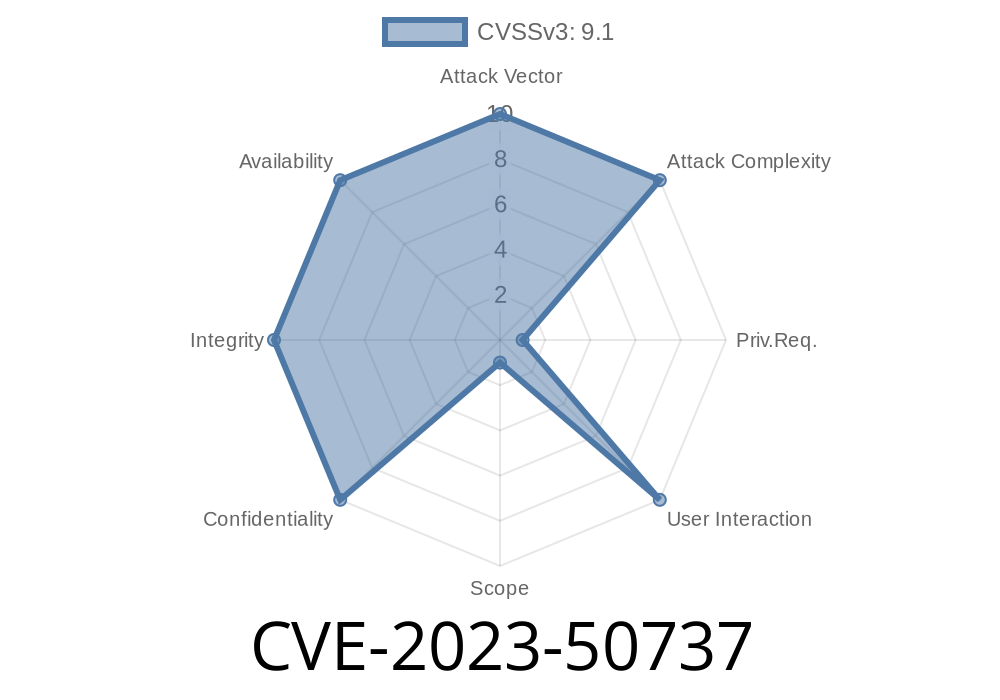In this comprehensive long read post, we will dive deep into the vulnerability identified with the identifier CVE-2023-50737, which affects Lexmark printers. In particular, we will focus on the SE (Service Engineer) menu, as it contains crucial information used by Lexmark to diagnose device errors. This vulnerability in one of the SE menu routines can be exploited by an attacker to execute arbitrary code, posing a significant risk to affected devices. We will cover the exploit details, provide a code snippet to demonstrate the vulnerability, and link to original references for further information.
Background on Lexmark Printer SE Menu
The Service Engineer menu is a critical component of Lexmark printers. It is typically accessed by technicians or engineers, as it contains essential diagnostic information and is used to troubleshoot and address device errors. However, when vulnerabilities are discovered within this menu, they can be leveraged by attackers to compromise the printer and, in some cases, pose a threat to the entire network to which the printer is connected.
Details on CVE-2023-50737 Vulnerability
The discovered vulnerability exists within one of the routines present in the SE menu. When exploited, it allows the attacker to execute arbitrary code by triggering this specific routine. This can lead to unauthorized access, loss of sensitive information, and potentially spreading to other devices within the same network.
The exploit itself relies upon a buffer overflow vulnerability. When a specially crafted input data of a certain length and structure is sent to the vulnerable routine, it can cause a buffer overflow, resulting in memory corruption and allowing the attacker to execute arbitrary code with the same privileges as the printer’s operating system.
Code Snippet Demonstrating the Vulnerability
#include <stdio.h>
#include <string.h>
int trigger_vulnerability(char *input) {
char vulnerable_buffer[128];
strcpy(vulnerable_buffer, input);
return ;
}
int main(int argc, char *argv[]) {
if (argc != 2) {
printf("Usage: %s <payload>\n", argv[]);
return 1;
}
trigger_vulnerability(argv[1]);
return ;
}
This code snippet demonstrates the vulnerability in a simplified form. The function trigger_vulnerability takes an input string, which is copied into a vulnerable buffer without any boundary checks. When the contents of this buffer are used in any subsequent operation (omitted for simplicity), it can cause memory corruption and allow the attacker to execute arbitrary code.
Exploit Details
In order to exploit the vulnerability, the attacker should craft a specially formatted payload and deliver it to the vulnerable routine. To do so, the attacker may use a variety of techniques, such as phishing, social engineering, or even physical access to the printer. Upon successfully exploiting the vulnerability, the attacker can then execute arbitrary code on the device, and potentially use it as a foothold to further compromise the network to which the printer is connected.
For further information about CVE-2023-50737, please refer to the following sources
1. Lexmark Security Advisory: CVE-2023-50737 (Original Lexmark advisory)
2. CVE-2023-50737 – Buffer Overflow Vulnerability in Lexmark Printer SE menu Routine (MITRE's entry on the vulnerability)
Conclusion
Addressing this vulnerability in Lexmark printers should be a top priority for organizations using these devices. Patches and updates should be applied as soon as they are available, and where necessary, mitigating measures should be taken. By understanding the intricacies of the exploit and how it can be used to compromise devices, security professionals can better protect their networks and devices from potential threats.
Timeline
Published on: 02/28/2024 03:15:07 UTC
Last modified on: 02/28/2024 14:06:45 UTC
